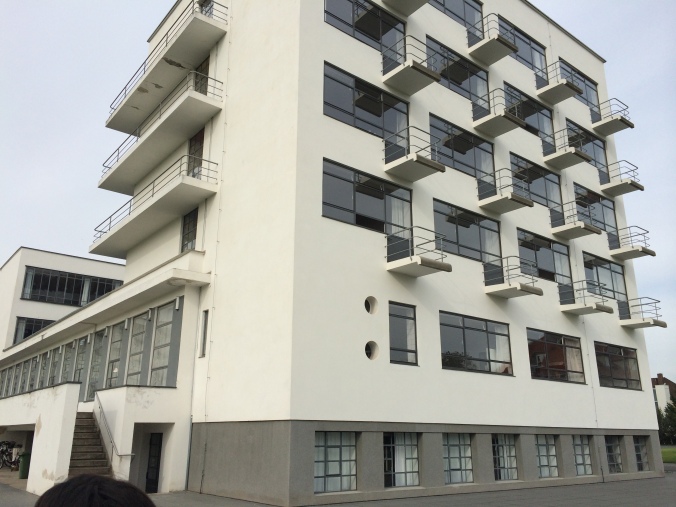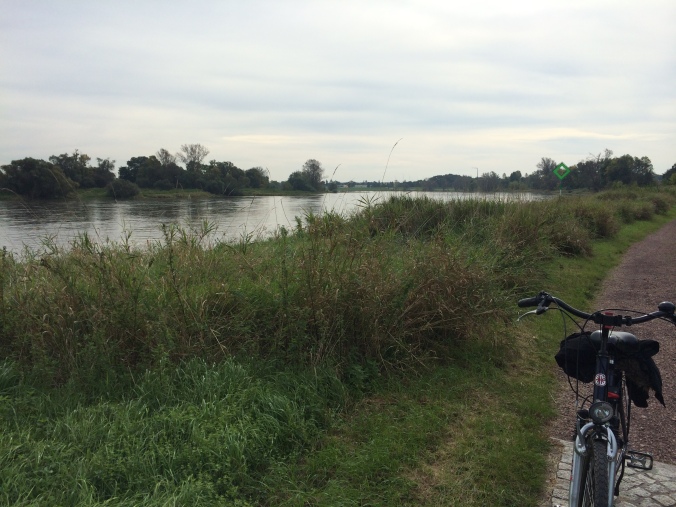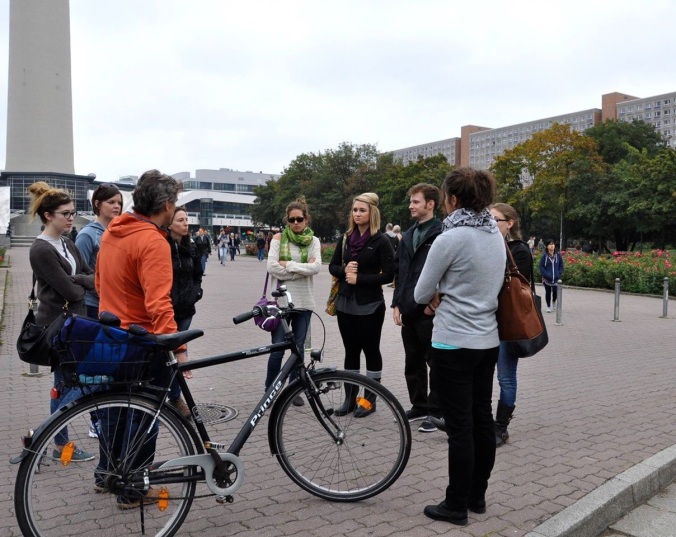Six weeks in Berlin have come and gone, and as time seems to go by more quickly with each passing day, the nine of us begin to think about how we will go back to our lives in America.
Six weeks in Berlin have come and gone, and as time seems to go by more quickly with each passing day, the nine of us begin to think about how we will go back to our lives in America. We live an entirely different lifestyle here by virtue of our surroundings; we separate and recycle our trash, we take reusable totes to the grocery store, we dry our clothes on racks rather than wasting energy by putting them in the dryer, and we haven’t been behind the wheel of a car in more than 60 days thanks to Berlin’s extensive and efficient public transportation system. These are small lifestyle changes that seem negligible, but when the results of which are taken collectively, they can actually make for both qualitative and quantitative change.

Inside the Umweltbundesamt, the architecture of which emphasizes natural air circulation and light, as well as incorporating nature inside the confines of the building itself.
Coming from America (unfortunately a global laggard in sustainability) we are now living the alternative. And outside of our microcosmic experience in Berlin, we have seen that sustainability is possible on the macro level. We visited the Umweltbundesamt in Dessau, essentially the German equivalent of the Environmental Protection Agency. With a fraction of the employees and budget, they have a much larger influence on policy compared to the EPA.
We also toured the Bauhaus, an architectural school in Dessau that built in the postmodern style as early as the 1920s, before its activities were disrupted by the rise of Hitler’s Third Reich.

The Bauhaus in Dessau, Germany. An architectural school that built in the postmodern style as early as the 1920s.
The Bauhaus also experimented with natural air circulation, energy conservation, and simplicity in terms of furniture and interior designs serving a functional purpose.
During our time in Dessau, we also toured a biosphere along the Elbe River via bicycle. The nature preserve is a protected area dedicated to preserving biodiversity.
In our classes and experiences, we have also felt a sense of urgency and the need for substantial change in the immediate future.
In our classes and experiences, we have also felt a sense of urgency and the need for substantial change in the immediate future. Various fellows at Ecologic Institute have impressed upon us the importance and complexity of achieving sustainability on a global scale. Katharina Umpfenbach stressed the importance of individuals’ attitudes and subsequent behaviors in terms of instating change; Doris Knoblauch explained that while think tanks have real influence, it can be severely limited by political systems; and Benjamin Görlach stressed the importance of creating a green economy, rather than greening a few sectors to achieve short-term change. Perhaps most resonating in his message was Dr. Ralph Bodle, an international lawyer who experienced the failures of the 2009 Copenhagen Conference of the Parties firsthand. He said that in an attempts to negotiate binding international climate change policy, he woke up in a hotel and sincerely did not know what country he was in. When the negotiations in Copenhagen ended without any tangible results, he returned home weighing less than his wife, as he had lost so much weight due to stress. He has dedicated his life to this, and yet he is skeptical as to whether real change is possible. To those who still believe that global warming is not real or that mitigating climate change is not a priority, he left us with this message: Consider that more than 70% of the world’s GDP is localized in port cities, and consider the implications if the sea level rises two meters.
Truly food for thought…


We may have crossed paths, as I was in Berlin toward the beginning of your time there. Each time that I go back I learn new things. My father calls my long ago time there in the U.S. Army “the masters degree that I didn’t get because of the draft.” I was inspired to read your blog report after hearing Dr. Christoph Stefes speak about your study program, and am writing to encourage you and your colleagues to continue building on it. As the old slogan goes “Berlin ist eine Reise wert.” Actually, worth more than one trip.
LikeLike